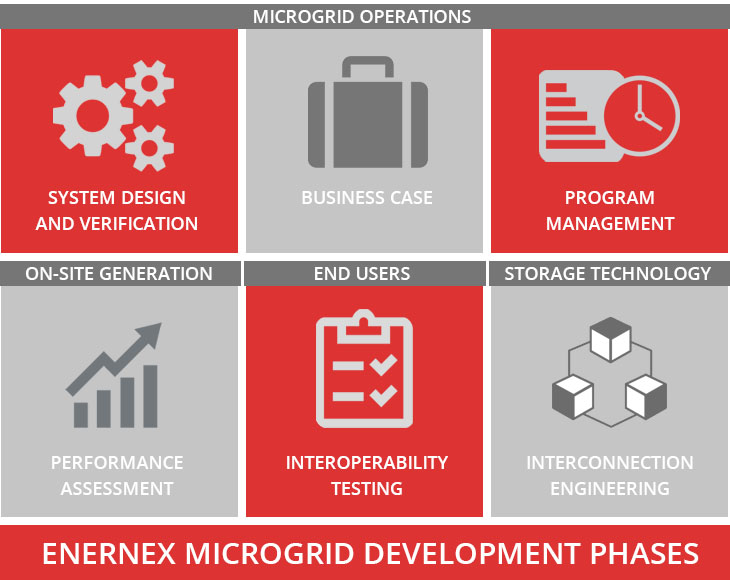![]() The Next Steps for Vehicle2Grid
The Next Steps for Vehicle2Grid
Published January 24, 2019 | Energy Central Online
Author: Sean Morash, Consultant, EnerNex
Energy storage has been dubbed the silver bullet to the modernization and diversification of our electricity system.[1] Storage can take a host of forms, but the stationary lithium-ion battery appears to have the most hype at the moment. The hype cycle and a certain eccentric billionaire at its center are bringing energy storage and the intricacies of grid operation to the national discourse, but the added benefit of pop culture can bring with it an obfuscation of conscientious planning. Are we overlooking a variety of other storage technologies that can serve niches within the multifaceted electricity system because pop culture and momentum are telling us, overwhelmingly, that a given solution is the best? While lithium-ion is likely the most versatile and can serve a variety of applications, other technologies, such as flow batteries or flywheels, may prove to be more cost effective in serving a specific function.
The blend of technologies that can serve grid functions is not limited to those technologies which are solely dedicated to serving the grid. Demand side management strategies, including demand response, can serve to offset the need for investment in dedicated grid resources altogether. Electric vehicles (EVs) possess largely the same lithium-ion technology as many of their stationary battery counterparts. The idea of EVs providing a host of grid support functions is not new; vehicle-to-grid research has been going on for the better part of two decades. Just as the Rocky Mountain Institute’s Wheel of Value shows some of the potential applications that batteries can provide to various stakeholders, the graphic below demonstrates how EVs apply to a variety of electric grid services. Similar wheels could be constructed for other technologies.
What will it take to leverage the electric vehicle for grid services, to move beyond research and pilots and into real-world, difference-making EVs? Well, lots of things.
In order to make a difference, there needs to be a process that can be improved
The grid is in a constant state of flux. Our collective behavior is an unpredictable variable that impacts grid operations. The weather impacts things as well – not just what we chose to do on a given day, but increasingly how generation performs. The ever-changing landscape of the grid and the rapid evolution of technology results in a variety of strategies to efficiently operate the grid that should always be actively improving. The best way to solve a new challenge may not be what worked yesterday.
The idea of “improvement” and the “best” way to accomplish something is a multivariable assertion in itself. Is the solution the best with respect to technical, sustainable, or economic terms? Does the “improved process” represent an improvement for the person who has to do the job? These aren’t easy questions, but the broader point is that grid operators are increasingly embracing new technologies and processes.
There needs to be lots of EVs capable of helping the grid
As States pursue renewable goals, various fuel efficiency goals, or even mandate the sale of zero-emission vehicles, EVs are getting regulatory support. At the same time, battery technology has improved such that 200-miles on a single charge is attainable on a budget. A recent study by the National Renewable Energy Laboratory (NREL) modeled roughly 50% of all light-duty vehicles transitioning to electric fuel nationwide by 2040, and noted: “The flexibility of newly electrified loads (e.g., electric vehicles) to shift in time cannot be ignored in a discussion of demand-side load shape impacts.”[2] There are two fundamental truths within that NREL study: 1) EVs are coming, and (2) they can support grid functions.
It’s not just the sale of electric vehicles that are increasing; the EV infrastructure is already being built. New York State has invested in roughly 1,000 public EV charging stations that are currently active. Consider the City of Sacramento, who has 430 public or workplace EV chargers in city limits for their 3000 EVs. The City of Sacramento has taken the Field of Dreams approach: “If we build it they will come.”
These stations, and the EV owners who use them, impact real-world electrical operations and, the data gleaned from these early adopters can help educate the next wave of investment and incentivize charging behavior that helps the grid.
Balance the (potentially) competing interests of battery degradation and grid services
The first thing that pops up in discussions of vehicle-to-grid planning is the potential battery degradation within the EV. If using the car battery for grid services is a detriment to the car’s primary transportation function, then this idea is a non-starter. While it is true that grid-induced cycling can prematurely deteriorate batteries, the current thinking on the topic is well presented in the following passage, from Kotub Uddin, et al:
…Strategies to purely maximize return on investment for the EV owner, like that proposed by Dubarry et al., are not viable because of the resulting battery degradation. The compromise is to set limits on the amount of energy traded, based on prognostics. Indeed, by intelligently setting these limits, Uddin et al. show that V2G can both be viable and profitable.
It appears then, that leveraging an EV for grid services is possible within a set of yet-undefined parameters. Why are many of the studies that tackle the concept of planning for electric vehicles failing to assess the multiple-use applications of the batteries enabling electric vehicle propulsion? Moreover, what can be learned from the investments in EVs and charging infrastructure that have already been made?
Convince people to use their car for non-traditional car things
Cars have traditionally been used for driving. When they’re not being used for driving, they sit there. Putting your car to work when you’re not using it is new; it’s non-traditional. Ultimately, something new is not going to catch on until the economics appropriately convince new behavior. Speaking to wallets has a way of being effective.
Grid operators have yet to establish programs that talk to wallets. The general consciousness has been far more concerned with developing the infrastructure to charge cars. The early days of an “all of the above” strategy for EV charging infrastructure should soon be replaced by a more measured and targeted approach. A recent interview with the Chargepoint CEO touched on this idea. His note: The gas-station model is dead and buried. As long as there are public charging areas and reasonable spacing on highways so you can go on a long trip beyond your battery range, you’re set.
However, the electric power system does not operate in those two siloes. Rather, the power system operational paradigm considers a vast array of variables and scales, including time, location, and relational associations. From the practical standpoint, how do EV charging programs and investments align with the realities of how people charge their car? How should they?
The good news is that we have real-world charging behavior to learn from. Let’s start learning from it, start narrowing our focus around the most practical and impactful uses of EV resources, and start improving processes. The real silver bullet of modernization is not a stationary battery or a million, but rather to learn from what has already been done and to continuously rethink possibilities.
[1] https://www.utilitydive.com/news/a-silver-bullet-inside-fercs-landmark-energy-storage-rulemaking/433559/
[2] Mai, Trieu, Paige Jadun, Jeffrey Logan, Colin McMillan, Matteo Muratori, Daniel Steinberg, Laura Vimmerstedt, Ryan Jones, Benjamin Haley, and Brent Nelson. 2018. Electrification Futures Study: Scenarios of Electric Technology Adoption and Power Consumption for the United States. Golden, CO: National Renewable Energy Laboratory. NREL/TP-6A20-71500. https://www.nrel.gov/docs/fy18osti/71500.pdf.



